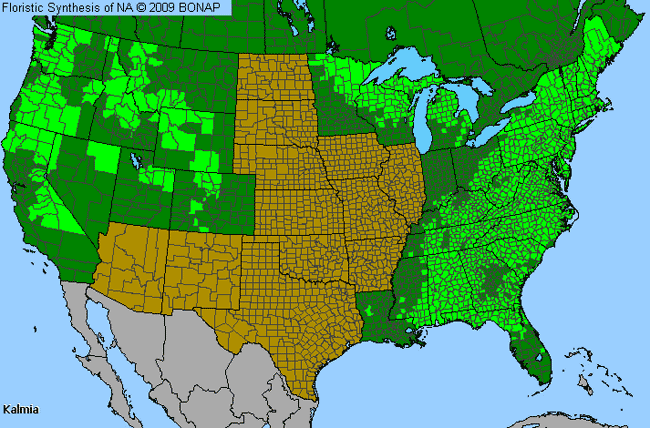Mountain-Laurel (Kalmia)

Mountain-Laurel Genus Details

The beautiful mountain laurel was adopted in the early twentieth century as Connecticut's state flower. Its flowers are starlike, deep pink to white with fused petals. Its leaves are leathery and evergreen, covering reddish brown, scaly bark. It grows best in dry, acidic soil in full sun. Mountain laurel shrubs rarely grow over 3 feet. The flowers, leaves, and seeds are poisonous to humans and cattle. Native Americans called it spoon wood, as they used the even-grained wood to make eating utensils.
Mountain-Laurel Allergy Info

While pollen can be released from the slightest touch to the stamens, Kalmia pollen is rarely found to be allergenic.
Mountain-Laurel Pollen Description

Pollen grains are united into tetrahedral or rhomboidal tetrads; usually 3-colporate or distinct. The colpi are short and the ora lalongate.
The intine is thickened at the apertures and the grains are usually 30-35 micrometers in diameter.
Species in This Genus

Allergenicity Legend:
 Mild Allergen |
Mild Allergen |
 Moderate Allergen |
Moderate Allergen |
 Severe Allergen |
Severe Allergen |
 Allergy Test Available
Allergy Test Available
Mountain-Laurel (Kalmia) is a genus of the ERICACEAE family.
This genus includes the following allergenic species:
This genus includes the following allergenic species:













